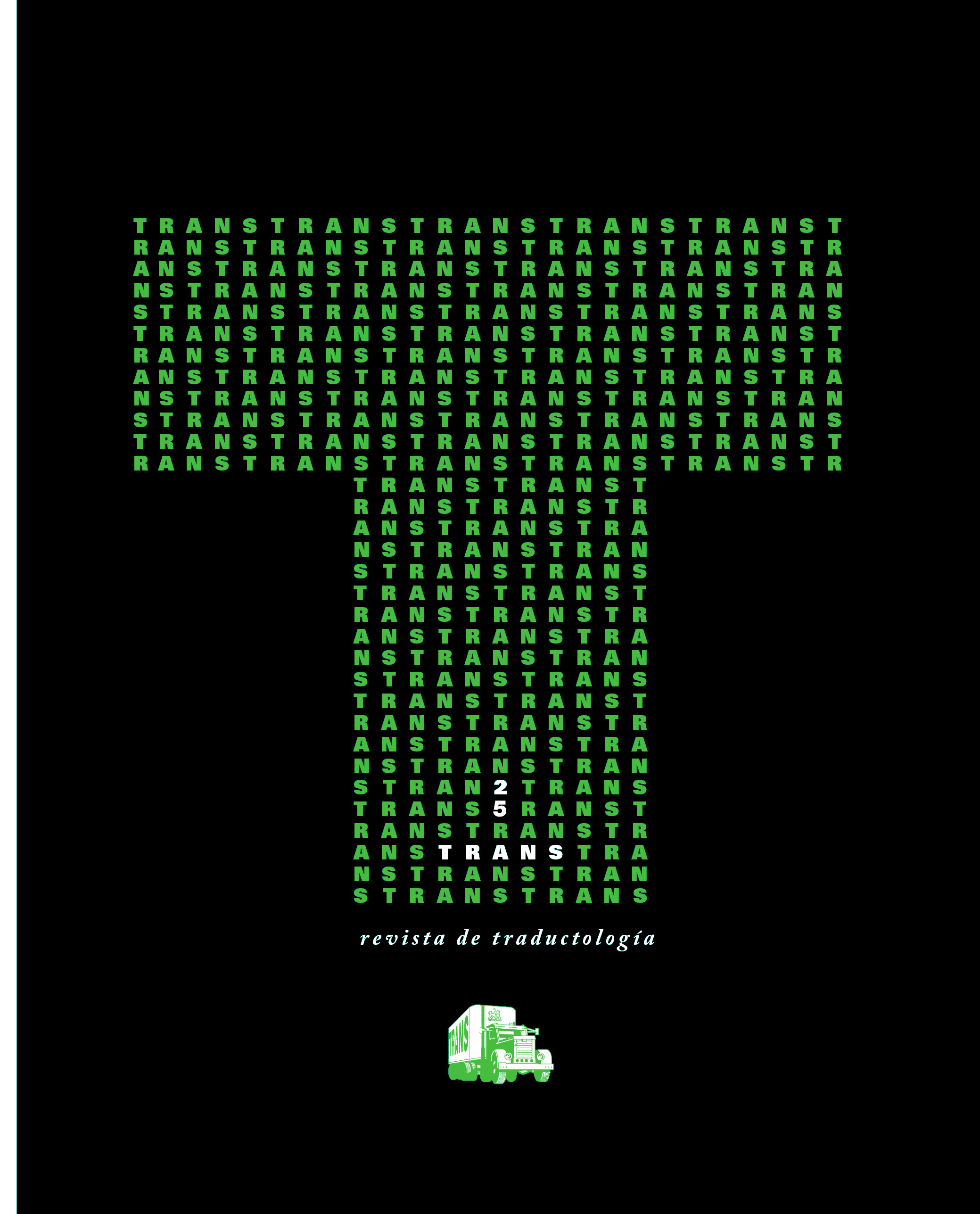The Use of Arabic Loanwords in Literary Translation from Arabic into Spanish: a study of three contemporary narrative works
DOI:
https://doi.org/10.24310/TRANS.2021.v1i25.10116Keywords:
arabic loanwords, translation, techniques, quivalence, culturemesAbstract
This paper is a descriptive study that aims, through presenting some cases of the use of Arabisms or Arabic loanwords in the literary translation from Arabic to Spanish, to determine the function that these fulfill in the translated text. In other words, it aspires to demonstrate if they are the only equivalents of the original word in Arabic or there are other more widely used alternatives, and despite this they have been preferred in the translation to give it an exotic Arabic aspect, especially when it comes to unusual or obsolete Arabic loanwords or these which meanings have changed, and they only keep phonic similarity with the original Arabic words.
Downloads
Metrics
Publication Facts
Reviewer profiles N/A
Author statements
Indexed in
-
—
- Academic society
- N/A
- Publisher
- Universidad de Málaga
References
ABDEL MEGUID, Ibrahim (2000 [1996]): La A?ad Yan?mu F? Al Askandariyyah [Nadie duerme en Alejandría], Köln (Alemania): Mansh?r?t Al ?amal.
ABDEL MEGUID, Ibrahim (2016): Nadie duerme en Alejandría, trad. Pablo García Suárez, Madrid: Ediciones del Oriente y del Mediterráneo.
EL GUITANI, Gamal (2017 [1974]): Az-Zaini Barak?t, Guiza: D?r Nah?it Mi?r.
EL GUITANI, Gamal (1994): Zaini Barakat, trad. Milagros Nuin, Madrid: Ediciones Libertarias, Al-Kálima (novela).
GARCÍA SUÁREZ, Pablo y Luis M. Pérez Cañada (2017): Manual de traducción periodística árabe-español Introducción teórica, textos y claves, Cuadernos 17, Escuela de Traductores de Toledo, Universidad de Castilla-La Mancha. Recuperado de <https://issuu.com/escueladetraductorestoledo/docs/cuaderno_17> [Consulta: 17-VIII-2020]
GUTIÉRREZ ALMENARA, Angelina (2016): Los traductores de árabe hablan El caso de ediciones del oriente y del mediterráneo (1994-2016), Cuadernos 15, Escuela de Traductores de Toledo, Universidad de Castilla-La Mancha.
IBN ‘ABDUL•LAH AL•MAGLUZ, Sami (2013): A?las Tarij Al ‘A?r Al Mamluki (Atlas de la historia de la época de los mamelucos), Riad: Obekan.
MOLINER, María (1967): Diccionario de Uso del Español Madrid: Gredos, 3.0 (CD-ROM).
NEWMARK, Peter (1999) [1988]: Manual de traducción, versión española de Virgilio Moya, 2.a ed., Madrid: Cátedra (lingüística).
RUBIERA MATA, Ma Jesús (2004): «La traducción de la literatura árabe clásica», en Míkel de Epalza (coord.) y otros, Traducir del árabe, Barcelona: Editorial Gedisa.
VENUTI, Lawrence (1995): The translator’s invisibility. A History of translation, London& New York: Routledge.
Diccionarios y corpus en Línea
AB? AL-‘AZM, ‘Abdul Ghan? (2013): Al-Mu‘?am Al-Ghan?, <https://www.almaany.com/>
AL-FAIRUZ?B?D?, Ma?dul-d?n Ab? ??hir Mu?ammad ibn Ya‘q?b, Al Qam?s Al Mu??? [El Diccionario Global], consultado en <https://www.almaany.com/>
Diccionario de la lengua española (2005), Espasa-Calpe <https://www.wordreference.com/>
Instituto de Investigación Rafael Lapesa de la Real Academia Española (2013): Mapa de diccionarios [en línea]. < http://web.frl.es/ntllet> [17- VIII-2020]
MAS‘?D, ?ubr?n (1964): Ar-R?’id: Mu‘?am Lughaw? ‘A?r?, <https://www.almaany.com/>
MUJT?R ‘UMAR, A?mad (2008): Mu‘?am Al-Lughah Al-‘Arabiyyah Al-Mu‘??irah [Diccionario de la lengua árabe contemporánea], en <https://www.almaany.com/>
PARKINSON, Dilworth B. (2012), arabiCorpus, disponible en <http://arabicorpus.byu.edu/>
REAL ACADEMIA ESPAÑOLA. (2014). Diccionario de la lengua española (23.a ed.). Consultado en <http://www.rae.es/rae.html>
REAL ACADEMIA ESPAÑOLA. (2020): Banco de datos (CORPES XXI) [en línea]. Corpus del Español del Siglo XXI (CORPES). <http://www.rae.es> [18-VIII-2020]
Downloads
Published
How to Cite
Issue
Section
License
All contents published in TRANS. Revista de Traductología are protected under the Creative Commons Attribution-NonCommercial-ShareAlike 4.0 International (CC BY-NC-SA 4.0) license. All about this license is available in the following link: <http://creativecommons.org/licenses/by-nc-sa/4.0>
Users can copy, use, redistribute, share and exhibit publicly as long as:
- The original source and authorship of the material are cited (Journal, Publisher and URL of the work).
- It is not used for comercial purposes.
- The existence of the license and its especifications are mentioned.
- ShareAlike — If you remix, transform, or build upon the material, you must distribute your contributions under the same license as the original.
There are two sets of authors’ rights: moral and property rights. Moral rights are perpetual prerogatives, unrenounceable, not-transferable, unalienable, imprescriptible and inembargable. According to authors’ rights legislation, TRANS. Revista de Traductología recognizes and respects authors moral rights, as well as the ownership of property rights, which will be transferred to University of Malaga in open access.
The property rights are referred to the benefits that are gained by the use or the dissemination of works. TRANS. Revista de Traductología is published in an open access form and it is exclusively licenced by any means for doing or authorising distribution, dissemination, reproduction, , adaptation, translation or arrangement of works.
Authors are responsable for obtaining the necessary permission to use copyrighted images.













21.png)
